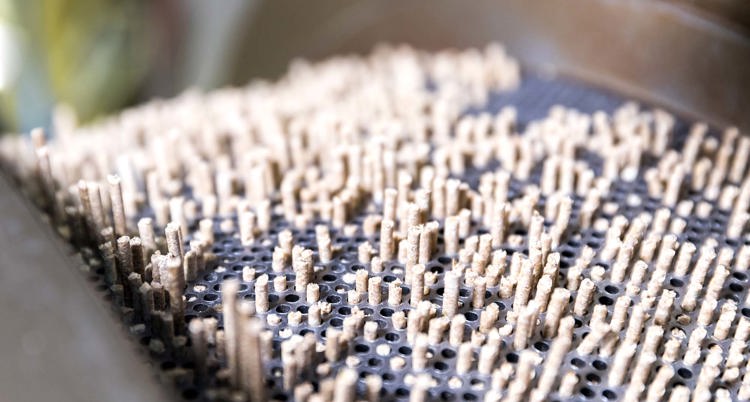
The negative effect of too hard a pellet on the feed intake of piglets is well known as shown in the SFR table below. Various studies show the influence of feed characteristics on the performance of broilers summarized in figure 4. During the first 14 days chicks have a strong preference for smaller and pelleted feed. Mash seems to decrease intake significantly, even with small (<2 mm) particle size as compared with pelleted feed. Too large pellet size (>3 mm) seems to lower intake and growth compared with smaller pellets. Then we have not mentioned yet the effects of meal between the pellets in cows feed and the effect of pellet design on buoyancy for fish feed.


Measure, know, understand, solve
Measuring parameters such as pellet hardness, durability, dissolving capacity, pellet length, buoyancy is a continuous process and give the directly involved employees insights into the effect they have on the product.


Improving pellet quality is a complex process
We need to optimize multiple parameters at the same time. Balancing these properties makes improving pellet quality a multidisciplinary approach. Specialists in production, nutrition and animal husbandry must be involved to reach the optimal pellet quality for the animal, which can be produced at consistent quality in the factory.
How does Koudijs support this?
After analyzing the product and comparing it with your and our standards, we can involve our specialists from nutrition and production, at your or our production location. Especially production employees value this exchange of knowledge and advice on site hugely. Many big and small improvements have been realized this way.




